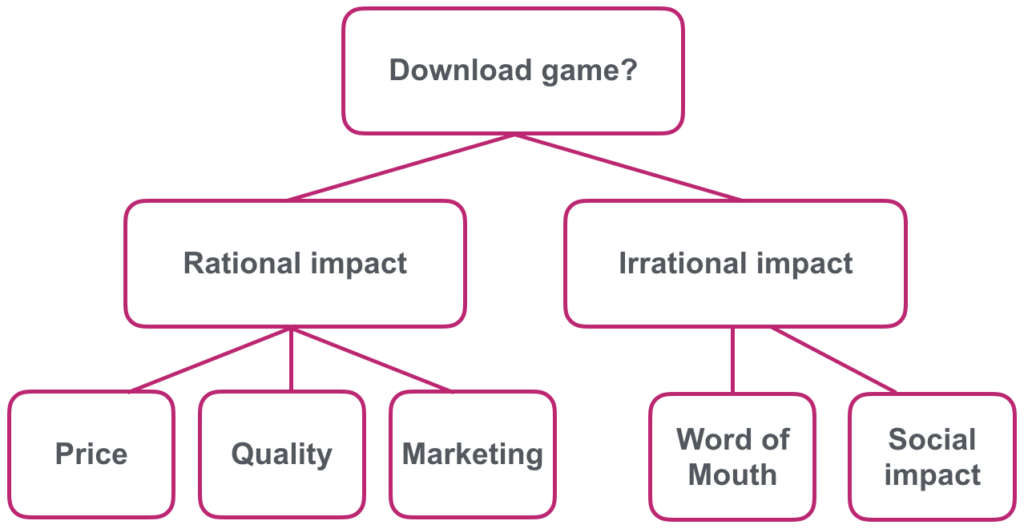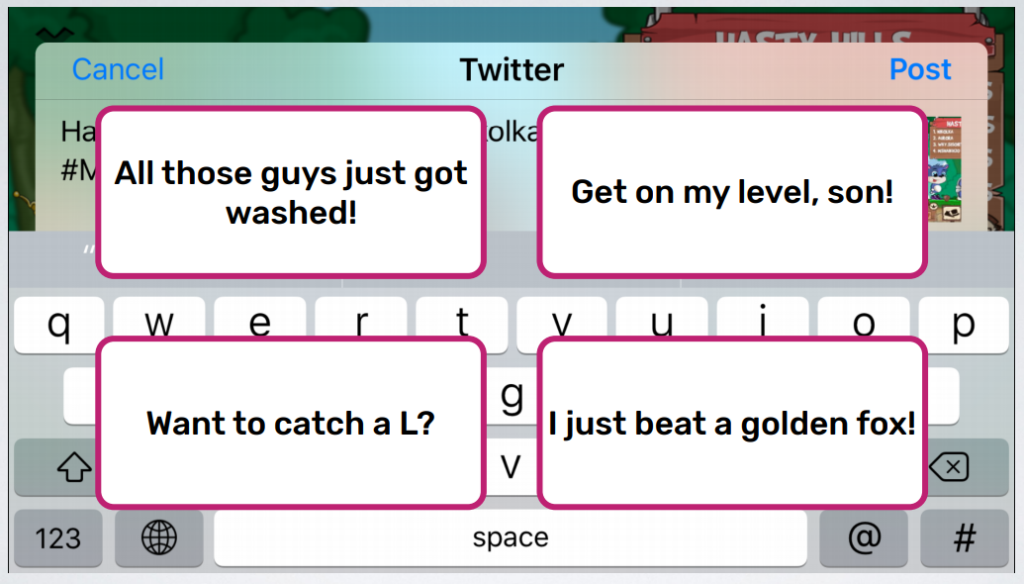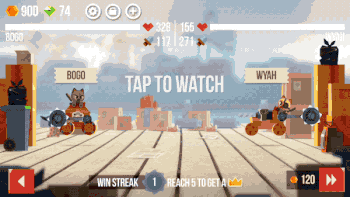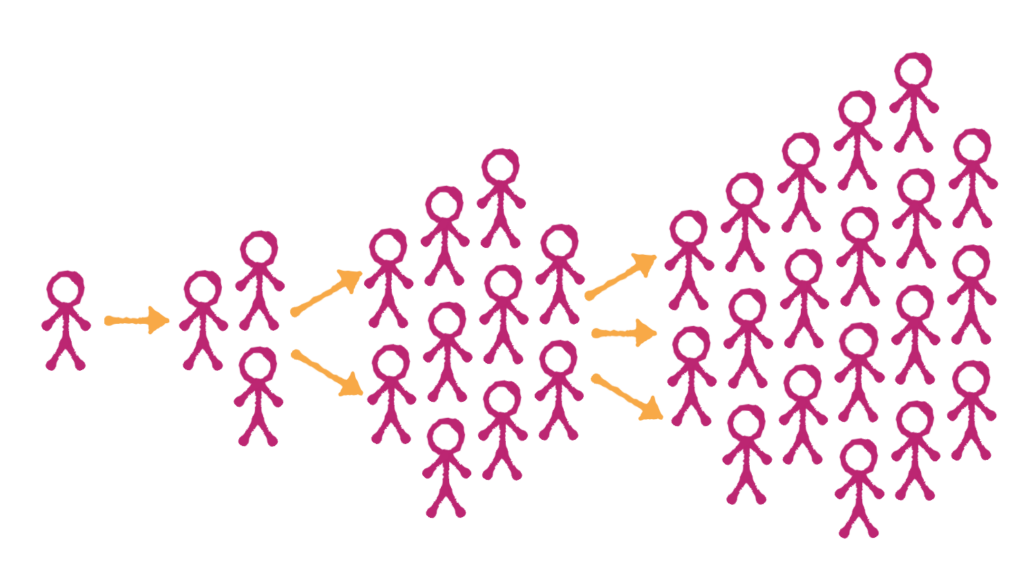· 8 min read
Generating Word-Of-Mouth Buzz For Your Game

Ben Meakin
Content Marketer at Megacool
What do we do when we experience something amazing, profound, funny, emotional or just plain weird? We talk about it. We want to share that experience with our friends, so that they can jump right in and see for themselves. This, of course, is word-of-mouth – and it’s one of the most powerful marketing tools out there. Whether you’re making mobile games or selling underpants, the dream scenario is that whoever engages with your product loves it so much that they have to tell their friends all about it.
Think about how often you’ve received a personal recommendation for an app, or a book, or a restaurant – and how often you then actually acted on that recommendation. Contrast that with seeing an advert for that same product, and how likely you’d be to act upon whatever call-to-action the ad was pushing.
People generally trust the things that their friends tell them (that’s what friends are for) – and are far more likely to see value in what their friends tell them in comparison to a corporation’s advertising budget. Where an ad campaign may require a huge financial investment to deliver results, word-of-mouth helps your game grow organically.

Organic growth is never an easy thing to attain (see also: “going viral”), and, full disclosure, you may never actually reach that end-of-the-rainbow tipping point that sees your game become an organic smash. But nonetheless, developers should keep in mind the potential for virality and word-of-mouth success when designing their games. Sometimes you just have to plant some seeds and hope that they’ll grow. Let’s take a look at what some of those seeds might be.
The Power of Emotions
For someone trying to grow their game, emotions are an incredibly powerful tool. If your game fills its players with joy, excitement, fear, or any other strong emotional reaction, many of them will want to share that feeling.
Emotion is a key word here when looking at triggering word-of-mouth, buzz or hype – whatever you want to call it. A strong emotional reaction to a game is a powerful thing – just look at the amount of YouTube streamers turning into screamers over Five Nights At Freddy’s.
Granted, you don’t need to make your players leap out of their chairs in order for them to have a strong reaction to your game – consider the short-but-addictive core loop of a game like Flappy Bird, that became an incredible viral success with little-to-no marketing spend to help it to the top of the downloads charts. The high difficulty spike of Flappy Bird meant that play sessions were short, with players oscillating between agonising frustration at another failed run and a huge burst of excitement at setting a new high score.
An emotional reaction is anything that stirs up strong feelings, and can come from winning a boss fight, nailing a hole-in-one, beating a higher-ranked opponent or even making a funny or clumsy move. When your game triggers something like this in a player, that’s a prime starting point to create word-of-mouth.
Sharing Must Be Seamless
It’s not just about packing your game with feels, however – it’s also important to help your players take that step from I am enjoying this to I am going to tell others about this.
The easier it is for a player to share their experience, the more likely it is that they’ll actually do it. Being able to share a video clip or a gameplay GIF lets players show off whatever cool thing just happened to them – but the user journey has to be frictionless. Megacool’s integration in the game C.A.T.S. allows users to share GIFs of their last battle, and shows players a preview of the GIF before they hit Share. Crucially, this preview is integrated neatly with the in-game battle report screen, so players can view it without stepping outside of the game experience and becoming disengaged.
Automatically including a link with a share goes without saying, but it’s worth investing time to create customised, engaging text to go with it. When your app is in the wild, look at what your players are saying when they share to social media – they might take the time to write their own messages, that you can then integrate back into your game as auto-completed share messages for the future.

Finally – when it comes to sharing, timing is everything. There’s nothing worse as a player than having your play session interrupted by an annoying pop-up demanding you do something else. Instead, the triggers to share need to come at the right moment, or be on the terms of your players.
To return to the example in C.A.T.S., the option to share fits seamlessly with the battle reports that players are already familiar with as part of the game, and is instantly eye-catching as an autoplaying GIF. If the player just enjoyed a crushing victory, or a particularly crazy match-up, then they may well decide to share that with others.

Building Advocates
Players who feel strongly about a game are more likely to become advocates for it: people who want to tell not just one of their friends to play it, but many of them.
Thanks to the massive reach of social media (the average Facebook user has around 300 friends), making that recommendation is easier than ever. However, while social media platforms have made it faster and easier to spread buzz around your game, they’re not necessarily the best platform for it.
Your own Facebook newsfeed has probably been inundated with app-generated posts from friends inviting you to try out whatever game they’re hooked on at that moment – and chances are, you’ve largely ignored them. But there’s another platform, one that pre-dates social media, that is arguably even better at generating word-of-mouth: messaging services.
A private message – say, an iMessage or SMS – is a personal communication that is ultra-targeted by the sender, unlike social media where the goal is usually to hit as many eyeballs as possible. This means that not only has the player decided to share your game, but they’ve also specifically selected a person whom they think will also enjoy it.
Where hundreds or thousands (your personal popularity may vary) of people may see your share on Facebook or Twitter, it will only be of relevance to a very small percentage. Compare this to receiving a message from someone you trust, telling you to check out this sweet new game they’re addicted to, because they’re sure you’ll love it too – you’re much more likely to click that link.
Bigger isn’t always better. Social media’s large audience is a tempting place to focus your efforts on increasing the organic reach of your game, but Megacool have seen that over 60% of all sharing via their platform comes from messaging services rather than social. Better still, messaging services are converting at a much better rate than social sharing.

Your Players Will Want To Share – Help Them Do It
Word-of-mouth exists as a natural human behaviour: a desire to share something we enjoyed with others, in the hope that they’ll feel the same. This instinct can be particularly powerful in the early stages after a game’s release, as early adopters seek the social currency of sharing with others.
Developers can – and should – facilitate word-of-mouth buzz by making sharing both appealing and frictionless. That doesn’t mean you need to incentivise players with in-game items or currency, but by creating memorable, emotional moments in gameplay that they want to pass on to their friends. Whether it’s reaching a new highscore or losing in a dramatic fashion, let your players easily capture that moment and share it with those they know will get the most value out of it.
To find out more about how Megacool can boost word-of-mouth buzz for your game via GIF sharing, see their Best Practices for Sharing post, or check out Megacool to get started today.